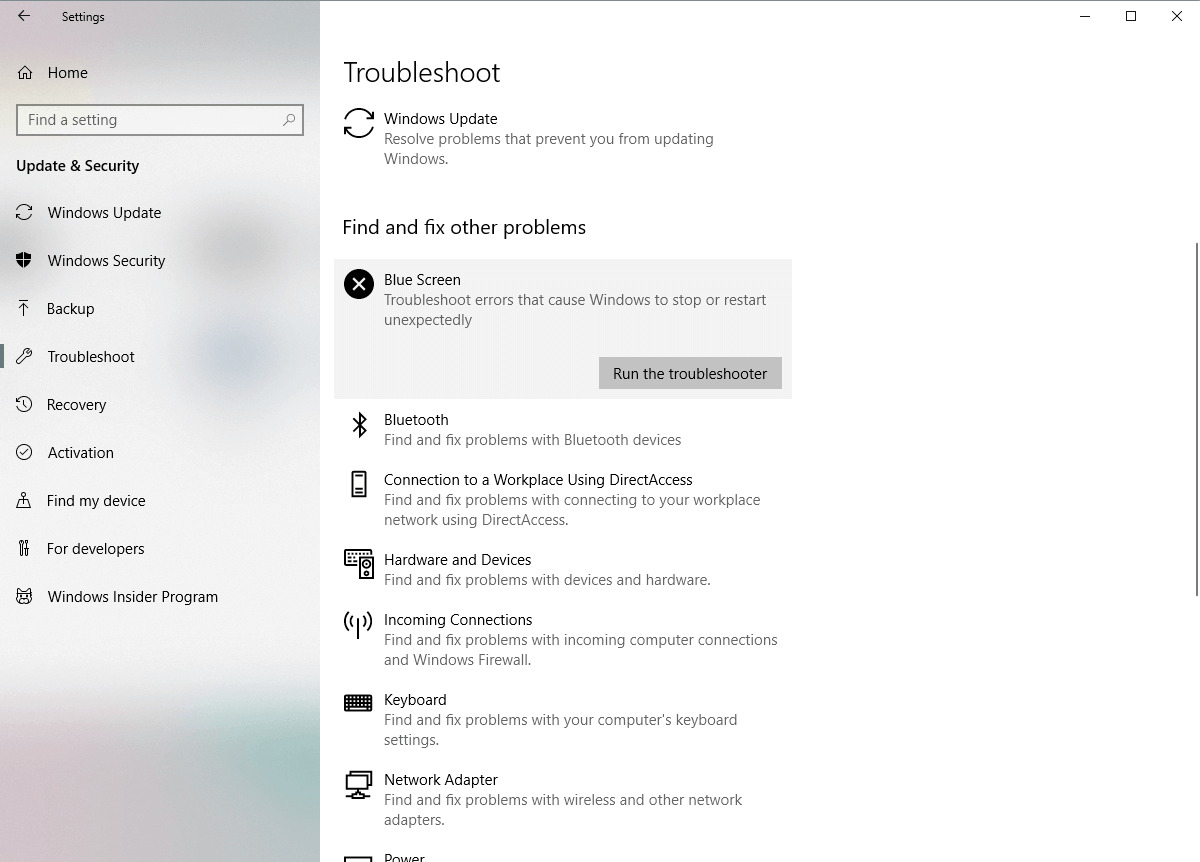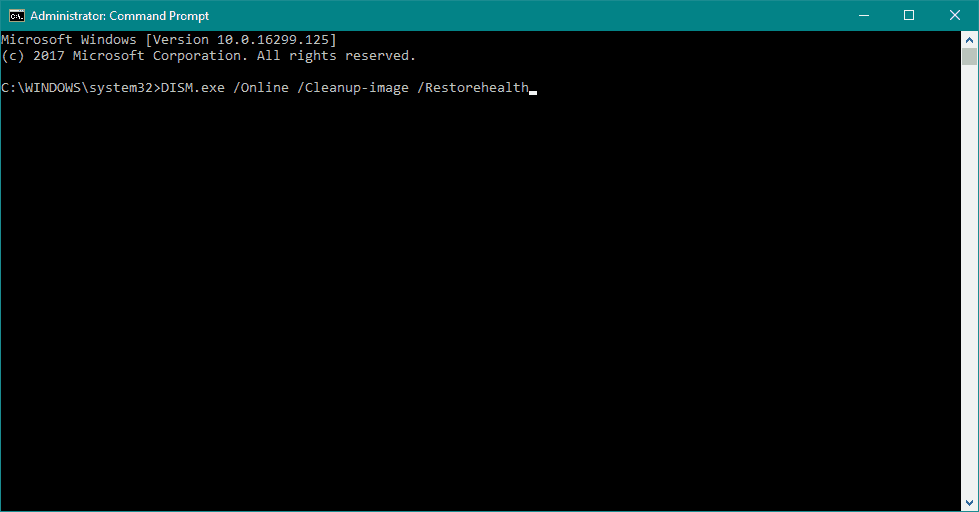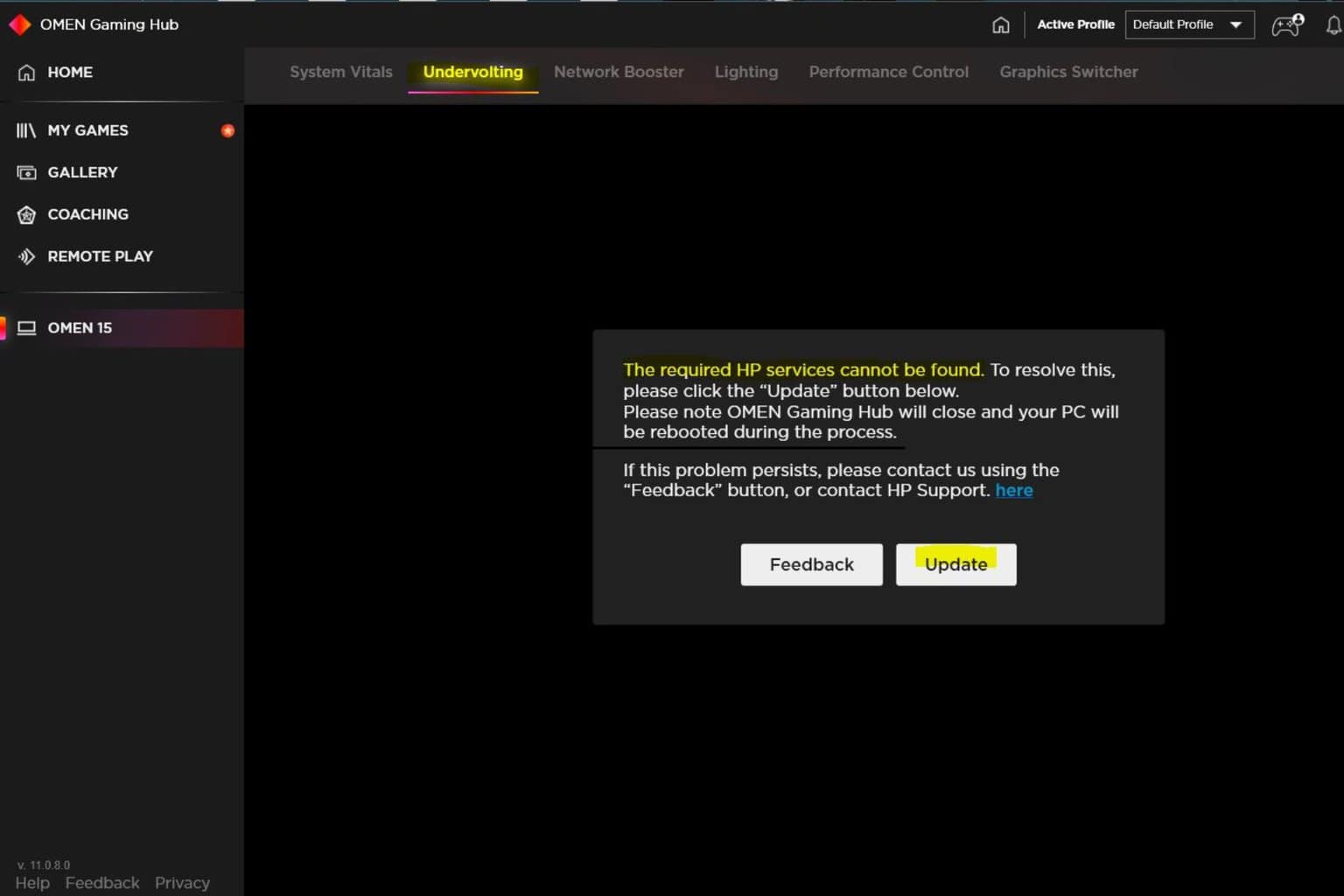Fix ACPI BIOS FATAL ERROR Error in Windows 10 [FULL GUIDE]
7 min. read
Updated on
Read our disclosure page to find out how can you help Windows Report sustain the editorial team. Read more

Blue Screen of Death errors such as ACPI_BIOS_FATAL_ERROR can be caused by faulty hardware or software, and they can sometimes be hard to fix. This error can cause many problems, therefore it’s crucial that you know how to fix it on Windows 10.
How to fix ACPI_BIOS_FATAL_ERROR BSoD error
- Remove problematic applications
- Update drivers and download the latest Windows 10 updates
- Run the Hardware Troubleshooter
- Run the SFC scan
- Run DISM
- Reset Windows 10
- Check your battery / power supply
- Check if your hardware is working properly
Fix – ACPI_BIOS_FATAL_ERROR Windows 10 error
Solution 1 – Remove problematic applications
BSoD errors are often caused by third-party applications, therefore if you installed or updated any applications before this error appeared, we advise you to find those applications and uninstall them.
We have to mention that antivirus programs and firewalls can often cause these types of errors to appear, therefore we advise you to remove your currently installed antivirus and check if that fixes the problem. Bear in mind that you’ll have to remove all third-party antivirus programs that you have installed since almost any antivirus can cause this problem to appear.
If uninstalling the antivirus didn’t fix the problem that’s because many programs, including antivirus, tend to leave certain files and registry entries after you uninstall them. Even these files can cause BSoD errors to appear, therefore it’s crucial that you use a dedicated removal tool to remove all files associated with your antivirus. Most antivirus companies have these tools for their software available for download, so be sure to download one.
Solution 2 – Update drivers and download the latest Windows 10 updates
In order for Windows 10 to recognize and use your hardware, you have to use appropriate drivers. If your drivers aren’t compatible with Windows 10, or if they are simply outdated or buggy, they might not work well with your PC, and you’ll encounter ACPI_BIOS_FATAL_ERROR Blue Screen of Death error.
These types of errors usually tell you which file is causing the crash, and with little research, you can easily find the driver that is causing this problem. To fix this error all you need to do is to visit your hardware manufacturer’s website and download the latest drivers for your device. If you cannot find which driver is causing this problem, you’ll have to update all drivers by using the same method.
Update drivers automatically
Searching for drivers on your own can be time-consuming. So, we advise you to use a tool that will do this for you automatically. Using an automatic driver updater will certainly save you from the hassle of searching for drivers manually, and it will always keep your system up to date with the latest drivers.
A third-party tool will help you update drivers automatically and prevent PC damage caused by installing the wrong driver versions. After several tests, our team concluded that this is the best-automatized solution.
Using expert software, you will manage all the PC drivers correctly and optimize the system using the latest drivers versions offered by PC HelpSoft Driver Updater.
In addition to downloading drivers, it’s just as important that you download the latest updates by using Windows Update. Windows 10 has certain issues with both hardware and software, and these issues can sometimes cause Blue Screen of Death errors to appear.
To prevent these types of errors from appearing it’s important that you keep Windows 10 up to date with latest updates. Many of these updates address hardware and software issues, but they also bring new features and security improvements, therefore if you wish to keep your PC safe and error-free, we strongly advise you to download the latest updates.
Solution 3 – Run the Hardware Troubleshooter
Now, let’s try with Windows 10’s built-in troubleshooters. The first troubleshooter we’re going to try is the ‘unified’ troubleshooter from the Settings page. You can use this troubleshooter to address all sorts of issues within the system. Including BSOD errors.
Here’s how to run Windows 10’s built-in troubleshooter:
- Open the Settings app and go to Update & Security section.
- Select Troubleshoot from the menu on the left.
- Select BSOD from the right pane and click Run the troubleshooter.
- Follow the instructions on the screen to complete the troubleshooter.
Solution 4 – Run the SFC scan
The next tool we’re going to try is the SFC scan. This is a command-line tool that scans your computer for potential problems and resolves them if possible. Additionally, it can also be helpful with the BSOD issues.
Here’s how to run the SFC scan in Windows 10:
- Right-click on the Start Menu button, and open Command Prompt (Admin).
- Enter the following line and press Enter: sfc/scannow
- Wait until the process is done (it may take a while).
- If the solution is found, it will automatically be applied.
- Now, close the Command Prompt and restart your computer.
Solution 5 – Run DISM
We’ll walk you through both standard and the procedure that utilizes the installation media below:
- Standard way
- Right-click Start and open Command Prompt (Admin).
- Paste the following command and press Enter:
- Wait until the scan is finished.
- Restart your computer and try updating again.
- With the Windows installation media
- Insert your Windows installation media.
- Right-click the Start menu and, from the menu, choose the Command Prompt (Admin).
- In the command line, type the following commands and press Enter after each:
- dism /online /cleanup-image /scanhealth
- dism /online /cleanup-image /restorehealth
- Now, type the following command and press Enter:
- DISM /Online /Cleanup-Image /RestoreHealth /source:WIM:X:SourcesInstall.wim:1 /LimitAccess
- Make sure to change an X value with the letter of the mounted drive with Windows 10 installation.
- After the procedure is finished, restart your computer.
Solution 6 – Reset Windows 10
Windows 10 reset is similar to clean install, and if the ACPI_BIOS_FATAL_ERROR error is caused by third-party software, you should be able to fix it by resetting Windows 10. Bear in mind that resetting Windows 10 will delete all files and folders from your C partition, so we strongly advise you to back up your important files. After backing up your files, you should also create a bootable USB flash drive because you might need it to complete this process. To perform a Windows 10 reset, do the following:
- Restart your computer few times during the boot in order to start Automatic Repair. Alternatively you can hold the Shift key on your keyboard and click the Restart button.
- Choose Troubleshoot > Reset this PC > Remove everything. You might get asked to insert Windows 10 installation media, so be sure to do so.
- Select Only the drive where Windows is installed > Just remove my files and click the Reset button.
- Follow the instructions to complete the reset process.
After you complete Windows 10 reset, you’ll have a new installation without any third-party applications. If the error appears again, it means that the issue is most likely caused by your hardware.
Solution 7 – Check your battery/power supply
Sometimes errors such as ACPI_BIOS_FATAL_ERROR can be caused by your power supply, so you might want to check if it works properly. Several users reported that the cause for this error was their laptop battery, and after replacing the battery the issue was fixed. If you don’t own a laptop, we strongly suggest that you check your power supply unit.
Solution 8 – Check if your hardware is working properly
Almost any hardware component can cause this error, and if you recently installed any new hardware, we advise you to remove it or replace it and check if that fixes the error. If the problem still persists, it might be caused by faulty hardware, therefore we advise you to check all major components such as your motherboard, hard drive, graphic card, network adapter, etc.
ACPI_BIOS_FATAL_ERROR can cause all sorts of problems on your PC, but you can usually fix this error by checking and replacing your power supply unit. If that doesn’t work, feel free to try any other solution from this article.












User forum
0 messages